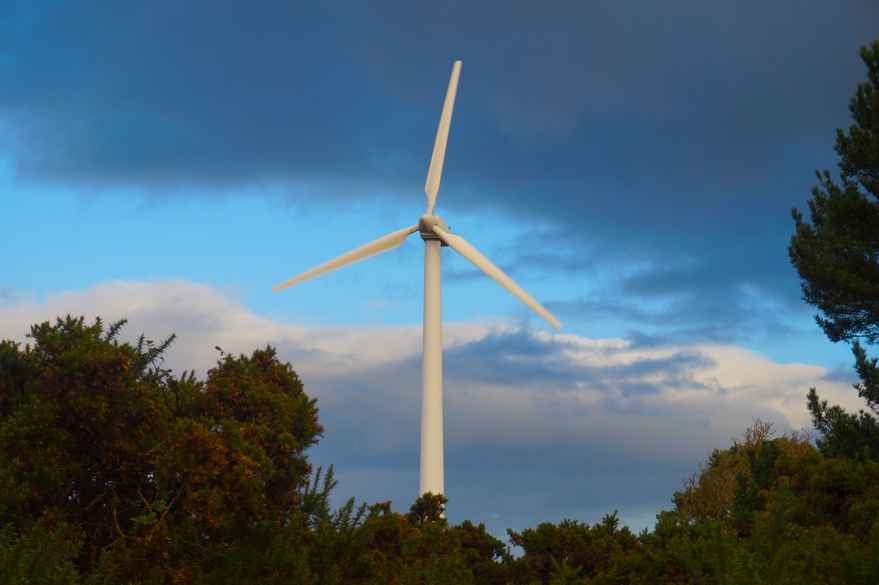SDG7 at the HLPF: Renewable Energies Driving Change

by May East
We all know that energy used for electricity, heating and transport are high emitters of carbon, and so contribute to climate change. We face a huge challenge in building an affordable and sustainable energy system for the future.
We need to walk a fine line between investment needed today and the growing cost of inaction tomorrow.
The solutions to decarbonise electricity are already working and cost-effective. Renewables are fast becoming the cheapest source of electricity. The UK has reduced greenhouse gas emissions by 42% since 1990, half way to its 80% reduction target by 2050. Renewables now provide 30% of UK’s electricity; including nuclear, and low-carbon sources provide over half of our electricity.
However, progress in decarbonisation of heat and transport has been slow and we need more renewables in all future decarbonisation pathways.
I want to talk about what’s happening in Scotland where I live – Scotland is fortunate for having a huge renewable energy resource – we’re a small country but with endless supplies of offshore and onshore wind, wave and tides.
Our resources and potential resources have a value which extends beyond Scotland and can help decarbonise the wider-GB and European energy system. Scottish renewable electricity displaced an estimated 9.4 million tonnes of CO2 across the UK system in 2016!
We’re also an ambitious, innovative country – did you know that the Scots invented TV, the telephone, the refrigerator, bicycles, golf, tyres, colour photography, flushing toilets…even the BBC and the Gin &Tonic!
So it is not surprising that Scotland has championed clean energy ways to meet its local and national heat, transport and electricity needs, helping to achieve its emissions reduction targets.
We are well on the way now to meeting our target of generating the equivalent of 100% of Scottish demand from renewable sources by 2020, just 2 years from now.
What I find particularly exciting about what is happening in Scotland is the significant increase in shared ownership of renewable energy projects – putting energy into the hands of local communities, and delivering a lasting economic asset to communities across Scotland.

Scotland’s ambition is that, by 2020, at least half of newly consented renewable energy projects will have an element of shared ownership.
When we are talking about local communities we mean
- A community group
- A local Scottish business
- A farm or estate
- A local authority
- A housing association
- Other public sector and charities
Community benefit payments can be a valuable source of income for communities located near to renewables developments. Over £12 million was paid out to communities between Nov 2016 and Nov 2017.
To conclude Scotland aims to maintain its leadership in developing local energy systems – building on the global shift away from centralised generation and passive consumption.
Scotland has a legacy of strong community engagement in local renewable generation, led by rural Scottish communities, including islands. These groups have led the way in developing innovative local energy solutions, overcoming their limited access to national infrastructure.

Worldwide progress on SDG 7
Heather Page, UN DESA, provided a statistical snapshot of progress on SDG 7, saying the number of people without electricity dipped below the “symbolic threshold” of 1 billion.
Moderator Adnan Amin, International Renewable Energy Agency, outlined positive developments in renewable energies since 2015, including that: China, India, and Saudi Arabia have committed to install hundreds of gigawatts of renewable energy; and declining costs favor the business case for renewables.
Panelist Siri Jirapongphan, Minister of Energy, Thailand, described policies that have enabled Thailand to ensure near universal access to energy.
Panelist Laurence Tubiana, European Climate Foundation, emphasized the centrality of clean transport and energy for industry.
Ricardo Puliti, World Bank Group, highlighted the role of the private sector, policy, regulatory reform, and financial instruments to address private sector risk.
Lead discussant Hans Olav Ibrekk, Ministry of Foreign Affairs, Norway, emphasized gender and equity considerations related to SDG 7, and proposed an inter-governmental oversight mechanism for the Goal.
Lead discussant Cheng Mengrong, Global Energy Interconnection Development and Cooperation Organization, described China’s global energy interconnection strategy to achieve efficiencies in energy transmission worldwide, linking clean energy bases to power loads.
Bangladesh, for LDCs, called for additional official development assistance, access to modern technologies, and investment to help LDCs achieve universal access to energy by 2030.
Kenya said it increased national access to energy from 27% in 2013 to 71% in 2017. Israel announced the installation of solar roofs on private and public buildings, and a ban on diesel and gas vehicles by 2030. Algeria announced the creation of jobs in renewables Germany called for reducing the carbon intensity of economies through carbon pricing. Switzerland described a national carbon tax to reduce the energy intensity of its construction sector. Sweden reiterated urgent calls for eliminating fossil fuel subsidies.
Austria presented a national climate and energy strategy to increase the share of renewables in the energy mix to 100% by 2030. Indonesia presented national measures to achieve 100% electrification by 2020. Morocco described a national strategy to achieve energy consumption savings of 20% by 2030. Republic of Korea highlighted the role of regional cooperation in achieving SDG 7. UNIDO highlighted the need for decarbonization and denuclearization. Democratic Republic of Congo noted that only 19% of its population has access to energy and announced the opening of the energy sector to public and private investment in electrification. Cameroon called for a holistic approach that allows security, development, and human rights to be pursued together. Jamaica announced programmes for enhancing energy efficiency in the transport sector.
There is still a distance to travel before renewables reach everyone, however, the growing number of options, behaviour and actions as consumers, will have a huge influence on the shape of future energy systems, and on the pace of global low carbon transition.

Brief based on
How Scotland is advancing SDG7 – A Talk by May East at the SDGs at the Local Level- SDG Learning Event 9 July 2018, UN Headquarters
IISD Briefing Paper
Under Target 7.2- By 2030, increase substantially the share of renewable energy in the global energy mix- Gaia Education, Scottish Government, Strathclyde University and UNITAR present Renewable Energies for Sustainable Development e-learning starting 8 October 2018 for 8 weeks.


0 comments
Leave a comment